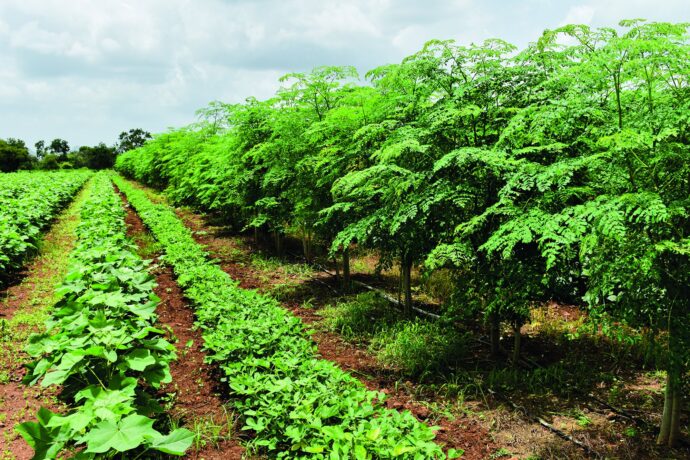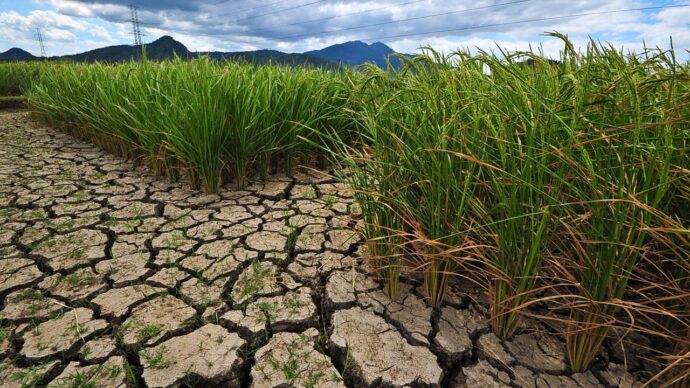Climate change poses unprecedented challenges to the agricultural sector, impacting weather patterns, water availability, and overall ecosystem stability. As the world grapples with the realities of a changing climate, farmers are on the frontline, facing the urgent need to adapt their practices to ensure the resilience and sustainability of food production. This article explores the multifaceted strategies employed by forward-thinking farmers to adapt to climate change, fostering resilience in the face of environmental uncertainty.
Understanding Climate Change Impacts:
The first step in developing resilient farming strategies is a comprehensive understanding of the specific climate change impacts affecting a region. This includes shifts in temperature, altered precipitation patterns, and the increased frequency of extreme weather events. Armed with this knowledge, farmers can tailor their adaptation strategies to address the unique challenges posed by climate change.
Diversification of Crops:

The deliberate expansion of crop varieties emerges as a pivotal strategy in strengthening agricultural resilience amidst the dynamic challenges presented by a shifting climate. This multifaceted strategy entails a profound shift in farming practices, with farmers strategically expanding their repertoire to include a broader spectrum of crops meticulously selected to thrive in the altered temperature and precipitation patterns characteristic of the changing climate. Beyond being a proactive response to climate variability, crop diversification serves as a linchpin for fostering a resilient agricultural ecosystem through a manifold of interconnected benefits.
In the realm of climate change adaptation, the exploration of a wider variety of crops is not merely a reactionary measure but a forward-thinking initiative. Equipped with a thorough comprehension of the climatic changes impacting their regions, farmers are making judicious choices regarding the selection of crops they cultivate. This deliberate choice extends beyond traditional staples, encompassing resilient varieties capable of withstanding temperature fluctuations, adapting to varied water availability, and resisting emerging pests and diseases. As a result, crop diversification becomes a dynamic strategy, ensuring that the agricultural landscape remains versatile and adaptable to the evolving climate.
Water Management Innovations:
In response to shifts in precipitation patterns that frequently result in either drought conditions or excessive rainfall, farmers are increasingly integrating cutting-edge water management innovations into their practices. This proactive approach involves the adoption of inventive irrigation techniques, the implementation of rainwater harvesting systems, and the utilization of advanced water storage solutions. Precision irrigation technologies, exemplified by the implementation of approaches like drip irrigation and the integration of soil moisture sensors, play a central role in steering this transformative shift. By leveraging these technologies, farmers optimize water utilization, ensuring crops receive precise hydration levels while simultaneously minimizing water wastage.
Agroforestry Practices:
Agroforestry practices involve the strategic incorporation of trees and shrubs into agricultural landscapes, presenting a multitude of advantages. Trees, when integrated, offer shade, diminish evaporation, and improve soil fertility. The adoption of agroforestry systems extends far beyond these immediate advantages, actively contributing to carbon sequestration, alleviating the impacts of extreme weather events, and creating microclimates that offer advantages for both crops and livestock.
Precision Agriculture and Technology Integration:
Empowered by technologies like satellite imaging, drones, and data analytics, farmers gain the capability to make informed decisions in real time. This sophisticated technology facilitates meticulous monitoring of crop health, soil conditions, and resource utilization. The result is the optimization of farming practices, leading to enhanced efficiency and a reduction in environmental impact.
Climate-Resilient Crop Varieties:

The imperative task of developing and embracing climate-resilient crop varieties assumes paramount importance in the relentless pursuit of securing global food systems. This endeavor involves the concerted efforts of dedicated plant breeders who are diligently working to craft crops endowed with the ability to endure higher temperatures, fend off the threats posed by pests and diseases, and flourish amidst the unpredictable nature of variable climatic conditions.
In the crucible of climate change, where rising temperatures and shifting environmental patterns pose formidable challenges to traditional agriculture, the significance of these resilient crop varieties cannot be overstated. The tenacity of these crops to withstand the intensifying impacts of climate change contributes directly to bolstering global food security, ensuring a more reliable and robust supply of sustenance.
Soil Health Management:
Healthy soils are essential for resilient farming. Farmers are adopting regenerative agricultural techniques, including cover cropping, conservation tillage, and the integration of organic matter, to bolster soil health. These methods enhance water retention, diminish erosion, and bolster the soil’s resilience against climatic extremes.
Community Collaboration and Knowledge Sharing:
Building resilience goes beyond individual farm practices. Collaborative efforts within farming communities, along with knowledge sharing and information exchange, play a vital role. Collaborative networks among farmers, extension services, and community-based organizations play a pivotal role in sharing best practices, exchanging lessons learned, and introducing innovative solutions. This fosters a collective approach to climate adaptation.
Government Policy Support:
Government policies and incentives can significantly influence the adoption of climate-resilient farming practices. Subsidies for climate-smart technologies, support for research and development, and insurance programs that mitigate climate-related risks are essential components of a comprehensive strategy to promote resilient agriculture.
Educating and Empowering Farmers:

Education and training are fundamental in empowering farmers to adapt to climate change. Empowering farmers with access to information, resources, and training programs equips them with the knowledge and skills essential for implementing effective climate-resilient practices on their farms.
Innovation in Poultry Equipment:
In the context of climate adaptation, advancements in poultry equipment are noteworthy. Poultry farming resilience is fortified through climate-controlled poultry houses, automated feeding systems, and streamlined waste management. These innovations not only optimize resource use but also enhance the well-being and productivity of poultry, aligning with the broader goal of sustainable and climate-resilient agriculture.
Adapting to climate change is an imperative for the agricultural sector, and resilient farming strategies are crucial for ensuring food security in the face of environmental uncertainties. By embracing a holistic approach that incorporates diversified crops, water management innovations, agroforestry, precision agriculture, climate-resilient crop varieties, soil health management, community collaboration, government support, and farmer education, agriculture can not only withstand the challenges posed by climate change but also thrive in a more sustainable and resilient manner. As the global community collectively addresses the impacts of climate change, the resilience of our farming systems stands as a cornerstone for a secure and sustainable future.















